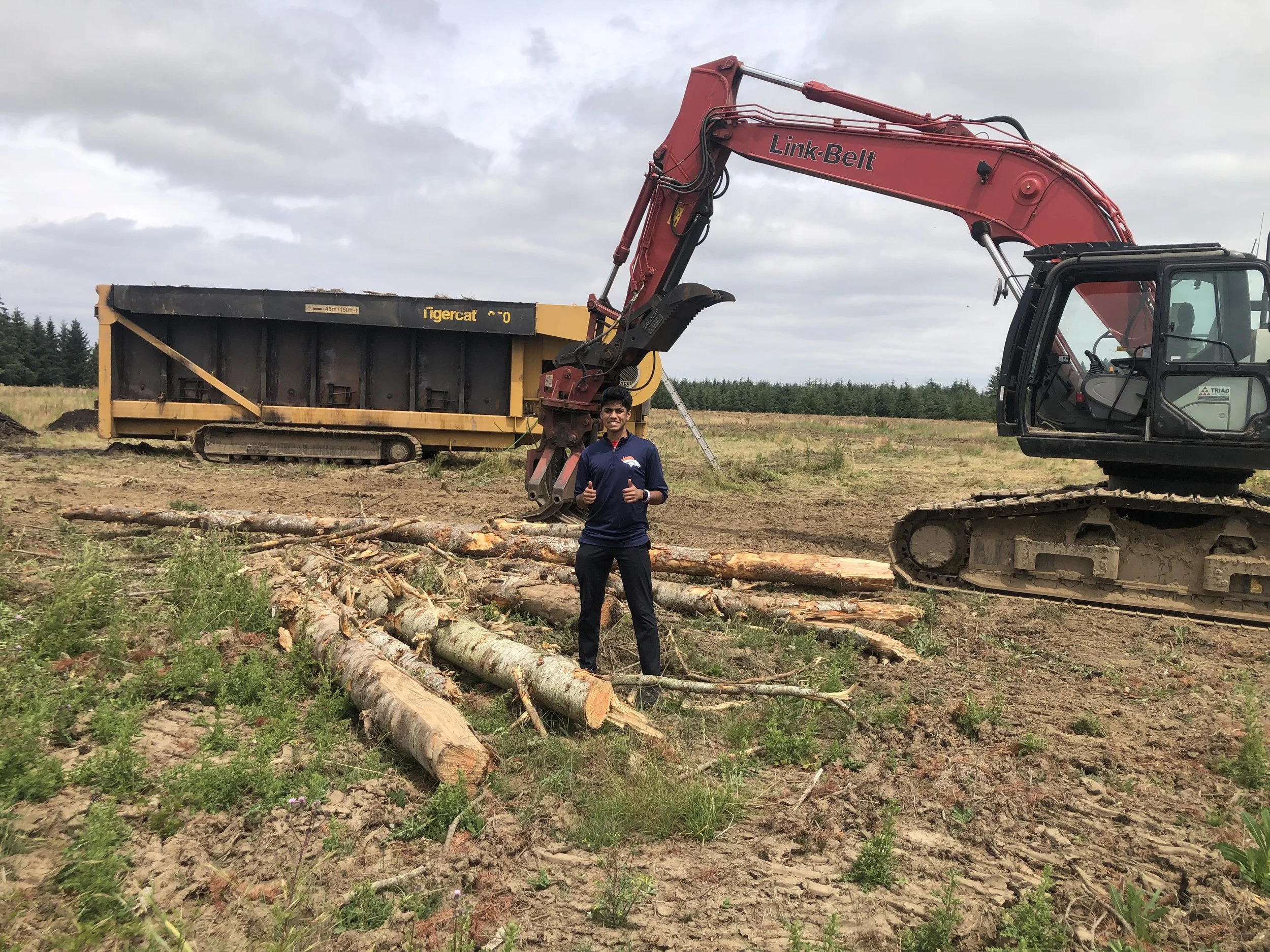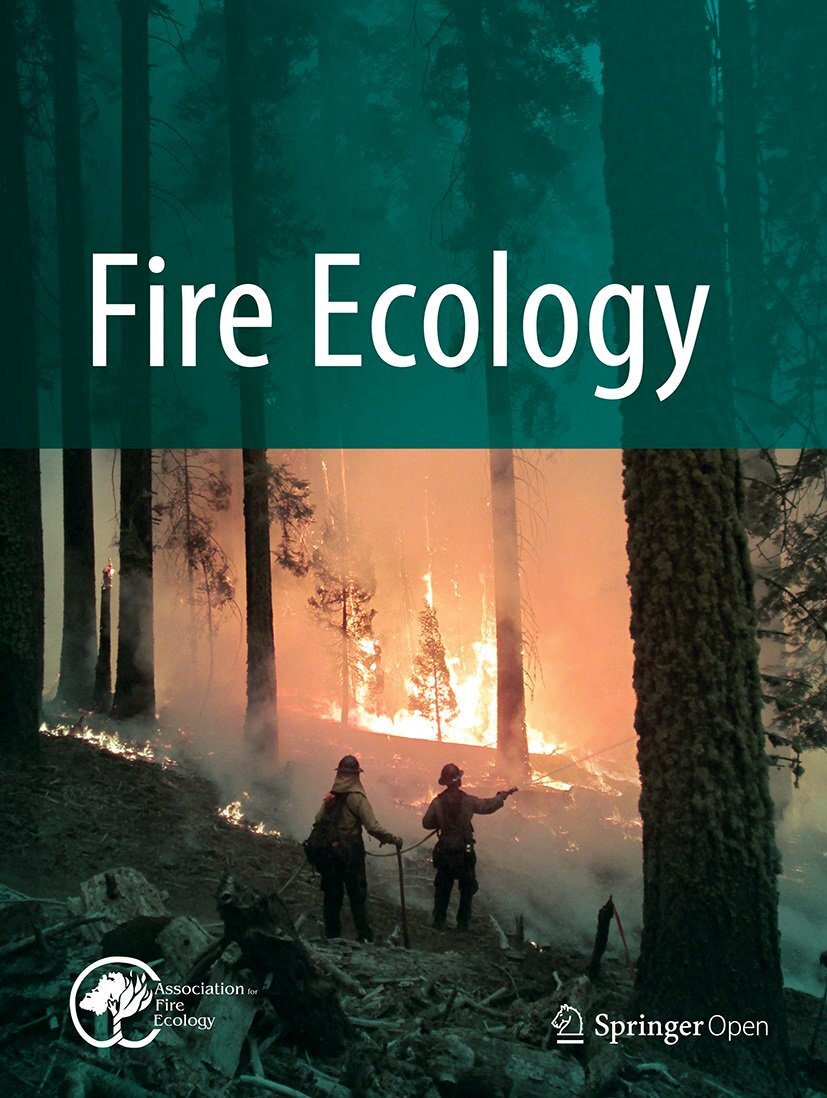Sohan Govindaraju is a high school student researcher who has worked with the Oregon Department of Forestry and the Oregon Hazards Lab at the University of Oregon. Sohan interned with the Oregon Department of Forestry and, with support from the Oregon Hazards Lab, has developed a model to optimize camera placement for early wildfire detection.
Read AFE’s interview with Sohan below!
What sparked your interest in Wildfire Research?
“It was one sunny evening in Fall 2020, when I wanted to go out for a run and noticed that the sky was bright orange while facing west with a lot of haze, ash and smoke. My home city of Portland, OR was engulfed in widespread effects of wildfire, smoke and ash from the nearby Riverside fire. Having gone through asthma during the early years, I was having great difficulty breathing and focusing on the run. So I quickly went back home and my parents and I put together a fan with some wet towels to ensure that the air inside the house stays as clean as possible. This experience made me think about all the people that will experience the ill-effects of increasing wildfire exposure in the world in general and the Pacific Northwest in particular. This was the beginning of my motivation and interest in learning more about wildfires and investigating/inventing ideas to mitigate the risks of wildfire.”
Sohan (left, green sweatshirt) and Brittany Oxford - Community Assistance Forester (standing, green ODF shirt). The Oregon Urban Community Forest (UCF) Team gave a talk at Sohan’s school, Jesuit High School, and Sohan had an opportunity to speak about his research.
From left to right: Sohan (seated, green sweatshirt), Brittany Oxford (standing, green ODF shirt), Scott Altenhoff - ODF UCF Manager (standing, black jacket), and Mike Kroon - Deputy Chief of All-lands and Restoration and Assistance Unit at ODF (seated, gray shirt).
You’re currently a student researcher with the Oregon Hazards Lab and a student intern with the Oregon Department of Forestry. Can you share how you found these partners?
“Well, during a school presentation in 2023 about Climate Change, the Deputy Chief of Forest Land presented about the Oregon Department of Forestry’s (ODF) work. He talked about ODF’s work with wildfires and what they are doing to fight wildfires. I was very keen on attending that presentation, and I was certainly fascinated to learn more about the concept of prescribed fires being used to combat fires. After his talk, I had the opportunity to meet him in person and we had a good chat regarding the wonderful work that ODF does with regards to wildfire risk mitigation. About a year later, I reached out to him to ask if there were any opportunities to work with ODF in the summer and explained more about my previous research on creating models for wildfire spread, studying or optimizing evacuation routes, etc. He then connected me with the Manager of the Urban Community Forest Division at ODF.
My relationship with the manager really took a stronghold with the student intern opportunity that he has provided. In the beginning the student internship activity was expected to be confined for summer only, but I grew very fond of working with my mentor and ODF, and so I have devoted a significant number of hours in a week during school terms also to learn and contribute towards wildfire research. With his networking support, my mentor also introduced me to wonderful people at Oregon Hazards Lab (OHAZ) at University of Oregon. With their strong guidance and support, I worked on the project to determine a mathematical way to optimize camera placements. I am delighted to say that the work won several awards at regional and state science fairs and is now qualified to the International Science Fair 2025.”
Representing Jesuit High School, Sohan had the opportunity to compete in and present his research at the 2025 International Science Fair (ISEF) in Columbus, Ohio. Sohan won the 4th place award in the Earth and Environmental Science Category at ISEF!
Sohan with his poster titled “A Multilayer Perceptron-Based Neural Network Model to Identify Optimal Camera Locations for Early Detection of Wildfires” at the 2025 ISEF.
You’ve researched wildfire camera placement, wildfire spread, evacuation routes, and recovery efforts. What has been your favorite part of the research process?
“My favorite part of these projects is the development of the model. Although they are time-consuming and can be difficult in terms of figuring out the methodology to create the model, the whole process of working with the data and models, discussing and brainstorming ideas with my mentors, guides, parents and friends to develop the final product, is a very rewarding experience. I also enjoy sharing the results with my peers and experts in the community at various platforms and competitions. I really love to talk to people and share my ideas and concepts with others, learn from them with an intent to help make the world a better place to live in for all of us.”
What do you see as your future career? Did your research help guide your path?
“My parents are both engineers and I have had a rewarding experience with my journey into experiencing the research and engineering world so far. I think I would enjoy being an engineer and work on addressing environmental issues and raising awareness, so we and the future generations can enjoy this wonderful planet. This research activity was extremely helpful to experience what I think I would truly enjoy doing.”






